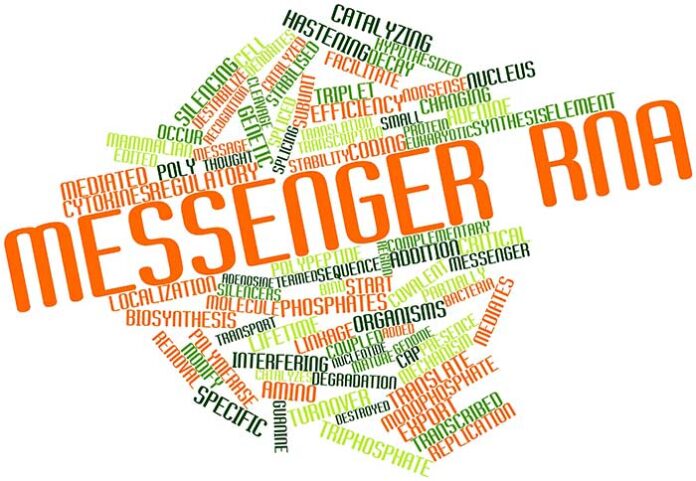New study shows that it might be possible to transfer memory between organisms by transferring RNA from a trained organism into an untrained one
RNA or ribonucleic acid is the cellular ‘messenger’ which codes for proteins and carries DNA’s instructions to other parts of the cell. They have been shown to be involved in long-term memory in snails, mouse etc. They also effect chemical tags in the DNA and thus control gene switch on and off. These RNAs carry out many functions including regulation of various processes inside the cell which are crucial for development and in diseases.
RNAs hold the key
It is well established in neuroscience that long-term memory is stored inside connections between the brain cells (connections are called synapses) and each neuron in our brain has numerous synapses. In a study published in eNeuro, researchers suggest that storage of memory could involve change in gene expression induced by non-coding ribonucleic acids (RNAs) and memory could be stored in the nucleus of neurons with these RNAs holding the key. Researchers claim to have ‘transferred memory’ between two sea snails, one of which was a trained organism and the other untrained by using power of such RNAs. This breakthrough led by David Glanzman at University of California Los Angeles can give us more information about where the memory is stored and what is the underlying basis for it. The marine snail (Aplysia californica) was specifically chosen for the study as it is considered a brilliant model to analyse memory and brain. Also, a lot of information is available about the most simplistic form of “learning” done by this organism i.e. making long-term memories. These five inches long snails have large neurons which are relatively easy to work with. And most processes in cells and molecules are similar between marine snails and humans. It is interesting to note that snails have only about 20000 neurons compared to more than 100 billion in humans!
“Memory transfer” in snails?
Researchers started out their experiments by first “training” the snails. These snails were given five mild electric shocks at their tails after an interval of 20 minutes and then after a day they were given five such shocks again. These shocks caused the snails to exhibit an expected withdrawal symptom in order to defend themselves – an action to protect themselves from any impending harm mainly because these shocks increased the excitability of sensory neurons in the brain. So even if the snails, who had received the shocks, were tapped, they displayed this involuntary defence reflex which lasted for an average 50 seconds. This is referred to as “sensitization” or a kind of learning. In comparison, the snails who had not received the shocks contracted for a short duration of about one second when they were tapped. Researchers extracted RNAs from the nervous system (brain cells) of the group of ‘trained snails’ (who had received the shocks and thus were sensitized) and injected them into a control group of ‘untrained snails’ – who had not received the shocks. The training basically refers to ‘acquiring experience’. Researchers took the brain cells of trained snails and grew them in the laboratory which they then used to bathe the untrained neurons of untrained snails. The RNA from a trained marine snail was used to create an “engram” – an artificial memory – inside an untrained organism of the same species. Doing so created a sensitized response lasting on an average 40 seconds in untrained snails as well as if they had themselves received the shocks and were trained. These results suggested possible ‘transfer of memory’ from untrained to trained organisms and indicates that RNAs could be used to modify memory in an organism. This study elucidates our understanding of how involved are RNAs in memory formation and storage and they may not just be the ‘messengers’ as we know them.
Implications on neuroscience
To continue upon this work, researchers would like to identify the exact RNAs which can be used for ‘memory transfer’. This work also opens up a possibility of replicating similar experiments in other organisms including humans. The work is being viewed with scepticism by many specialists and not being labelled as an actual ‘transfer of personal memory’. Researchers do emphasise that their results may have been relevant for a specific type of memory and not the ‘personalised’ memory in general. The human mind is still an enigmatic mystery to neuroscientists as very little is known and its very challenging to try to understand more about how it works. However, if this study supports our understanding and also works in humans then this could lead us to perhaps ‘lessen pain of sad memories’ or even restore or awaken memories, which sounds completely farfetched to most neuroscientists. It could be most beneficial in Alzheimer’s disease or post-traumatic stress disorder.
***
{You may read the original research paper by clicking the DOI link given below in the list of cited source(s)}
Source(s)
Bédécarrats A 2018. RNA from Trained Aplysia Can Induce an Epigenetic Engram for Long-Term Sensitization in Untrained Aplysia. ENEURO.
https://doi.org/10.1523/ENEURO.0038-18.2018
***




































